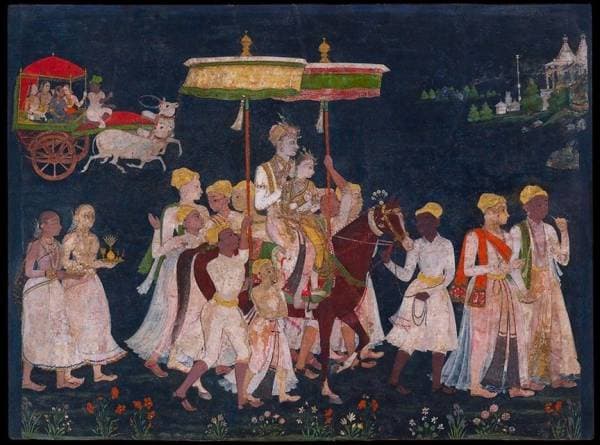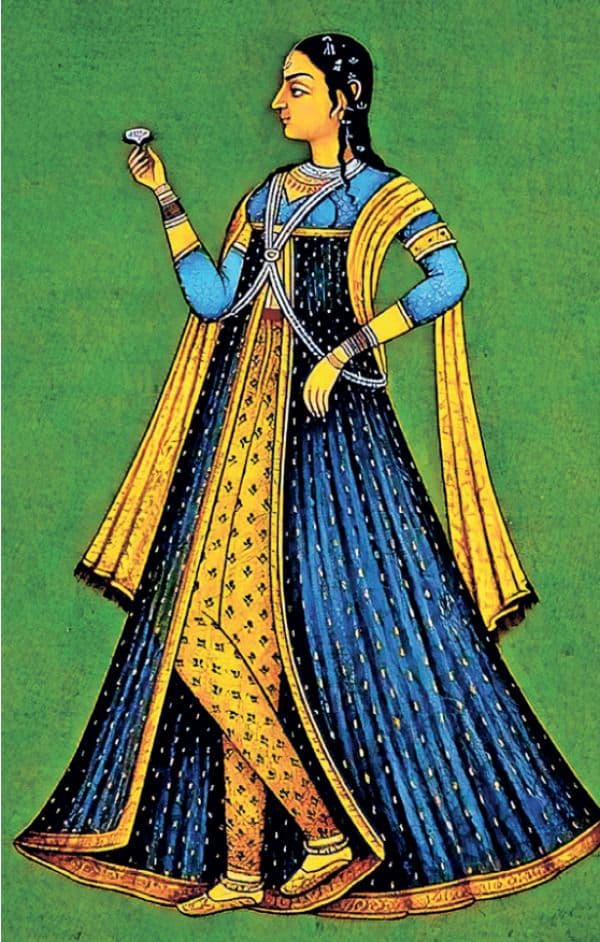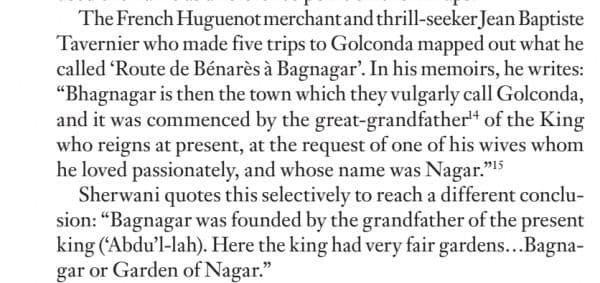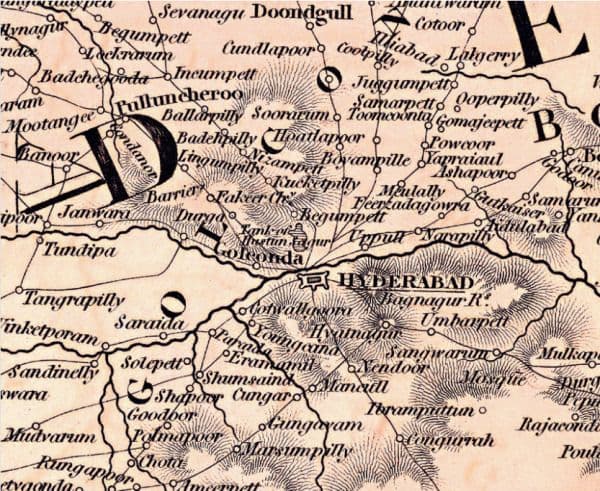Bhagyanagar
Claim: Hyderabad was never Bhagyanagar
Source: https://www.deccanchronicle.com/nation/current-affairs/111118/hyderabad-was-never-bhagyanagar.html
Fact: Hyderabad was Bhagyanagar
Here is a contemporary Qutub Shahi painting of the wedding procession of Qutub Shah & his Hindu wife Bhagmati. Hyderabad is named after her. It was commissioned by their grandson in 1650 CE.

Source of the painting: http://jameelcentre.ashmolean.org/collection/8/object/12395
Qutub Shahi dynasty was established by Sultan Quli Qutb Mulk (1470 CE-1543 CE). He came to India from Iran. India was then a land of fabled wealth and limitless opportunities. Sultan Quli Qutub Mulk came to India from Hamadan(Iran). When he first stepped on Indian soil at Chaul, the port city on the western coast in India, he picked up a clump of black clay & pledged that he would establish Shia religion all over India.
Sultan Quli started his career in the service of the Bahmani king Shihabuddin Mahmud. He rapidly rose in the ranks and was granted the Governorship of Telinga country. After the death of Bahmani sultan in 1518, Sultan Quli established himself as an independent ruler at Golconda.
Sultan Quli started his career in the service of the Bahmani king Shihabuddin Mahmud. He rapidly rose in the ranks and was granted the Governorship of Telinga country. After the death of Bahmani sultan in 1518, Sultan Quli established himself as an independent ruler at Golconda. Golconda Fort was not built by Sultan Quli. It existed much before Sultan Quli was even born. It was built by Kakatiyas. In fact, the Mughal chronicles such as Maasir-I-Alamgiri and Muntakhab Al Lubab admit it was held by Hindu kings before it passed into the hands of Muslims. Direct evidence that the Golconda fort dates back to at least the 13th century is provided by archaeology. Archaeologist Manika Sardar conclusively proves the inner walls of the Golconda fort date back to the 13th century. The massive blocks of Bala Hissar(high citadel) belong to this period.
When Sultan Quli took over Golconda, he made several “modifications” to the site. He added some fortifications. He converted the Golconda central fort temple into Jami Masjid. Today, this is known as “Hyderabad’s oldest Mosque”. Even today, we can see the traces of Hindu temples in the Golconda Jami Masjid. The kakatiya temple decorations such as stambhas, ratnas, vallis, and sakhas can still be found on its doorway. The Hindu character of Golconda was gradually effaced. The hill temple was later converted to Taramati masjid. Much later, the Akkanda Madanna temple was destroyed by Aurangzeb. However, the cave temples survived. The Jagadamba cave temple exists even today inside Golconda fort.
Sultan Quli was murdered inside the very mosque he himself built on the Hindu temple site when he was performing Namaz. As fate would have it, the murder was executed by his own son Jamshed Quli. Jamshed then usurped the throne. Jamshed Quli then began hunting for his brother Ibrahim Quli. Ibrahim fled Golconda and sought refuge in the Hindu kingdom of Vijayanagara. He was warmly received by Vijayanagar king Ramaraya. Ibrahim happily spent seven years in Vijayanagara and he was also granted a jagir.
Ramaraya was quite “secular”. He favored Muslim soldiers and placed Quran above the throne for the courtiers to pay respect. He allowed them to construct Mosques and perform animal(cow?) slaughter despite opposition by his brother. Naturally, Ibrahim Quli felt quite at home in Ramaraya’s kingdom. He was married to a Vijayanagara royal lady named Bhagirathi. Ramaraya used to address him as ‘Farzand’(son). After 7 years, Jamshed Quli died &Ibrahim went back to Golconda to win the war of succession & take the kingdom.
It must be noted that in the war of succession, Ibrahim received tremendous Hindu support under Ramaraya’s auspices. At Koilkonda fort on his way to Golconda, the Hindus pledged loyalty and support to him. In the Koilkonda inscription, Hindus promised, “We pledge support to Ibrahim Quli. Any of us who breaks the promise will have incurred the sin equal to the killing of cows and brahmins in Varanasi”. He was later called Malkibha(Rama), equating (Malik) Ibrahim with Lord Rama. With such support, Ibrahim naturally gained the throne and became the king. However, the same Ibrahim joined later hands with other Mµslim Sultans of Deccan and attacked the Vijayanagara kingdom in the battle of Tallikota in 1565.
In the Talikota war, Ramaraya’s Mµslim regiment under the Gilani brothers turned traitors and joined hands with the invading sultans. The battle was lost and Ramaraya was beheaded on the battlefield. The mighty Vijayanagara empire collapsed. After the war the Deccan Sultans sacked Vijayanagara for 6 months, looting and burning everything they found. Ramaraya’s “Farzand” Ibrahim appointed his brother-in-law and a minister for sacking + treasure hunt. The loot Qutub Shahis acquired by sacking Vijayanagara was so much that, almost 30 years later, a part of the booty was large enough to commission the construction of Hyderabad. Yes, Muhammad Quli built Hyderabad from loot his father obtained by sacking Vijayanagara.
Ibrahim Quli died and was succeeded by his son Muhammad Quli. Muhammad Quli married Bhagmati. Hyderabad was named after her. Some “intellectuals” now see this as ’love jihad’. Nothing could be farther from truth. It was Muhammad Quli who established Hyderabad & built Charminar. Muhammad Quli was raised by his Hindu mother. He fell in love with and married Bhagmati early in his life (c. 1589 CE). In his Urdu poems known as “Kulliyat”, he reveals some startling truths about himself. Muhammad Quli reveals that he was a Hindu in his early life. He was raised in the faith of his Hindu mother. Later in his life, he left Hinduism and adopted the Shia cult of his paternal ancestors. He speaks thus in his Kulliyat. Quli was,acc to his own admission,a Hindu when he married Bhagmati.There is no evidence that Bhagmati ever converted.That explains why she has no tomb. Thus,it was not “love jihad” by any stretch of imagination. This also explains why his wedding is depicted with Hindu rituals.
Here is an old painting of Bhagmati (now in Salar Jung Museum, Hyderabad). She must have exerted a tremendous influence. She had a contingent of 1,000 soldiers accompanying her. Quli styled her as “Hyder Mahal”(“brave beloved”). Both Hyderabad and Bhagnagar are named after her. Hyder Mahal/Bhagmati wore a crown and she called the shots in Qutub Shahi kingdom.

Some “historians” like Sherwani & Farooqui have indulged in fraud, lies, and deceit to deny the historicity of Bhagmati. Citing “French travelers”, they claimed Bhagnagar came from “Bhag” meaning gardens. Does the French traveler really say so? Let us examine primary sources. In truth, the French traveler clearly talked about Bhagnagar being named at the request of his wife. Sherwani completely ignores this statement and he fraudulently interpolates “gardens’ out of nowhere. The fact that Bhagyanagar was named after Bhagyamati and not ‘gardens’ is proven by the fact that the chronogrammatic name of Hyderabad on coins is “Farkhunda Bunyad”. Farkhunda in Persian means luck(Sanskrit Bhagya) and not “gardens” (Persian Bagh).

There is contemporary Mughal evidence for the existence of Bhagmati. During her own lifetime, Abul Fazl’s brother came to Hyderabad in 1591. His testimony proves the existence of Bhagmati & is a slap to those who deny her historicity. Another contemporary Muslim chronicler named Nizamuddin also wrote about Bhagmati in 1594 in her own lifetime. He testifies that Hyderabad/Bhagyanagar was named after her. The name “Bhagyanagar” never went out of vogue and continued to be used even in the 19th century. Here is Bhagnagar in an 1816 map, charted by British EIC cartographer Aaron Arrowsmith.

Source: https://twitter.com/BharadwajSpeaks/status/1335623844569231360